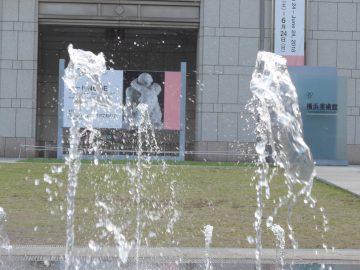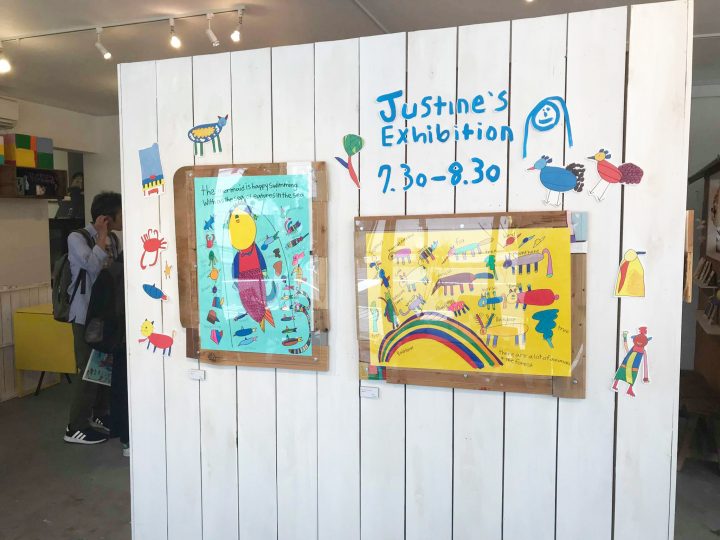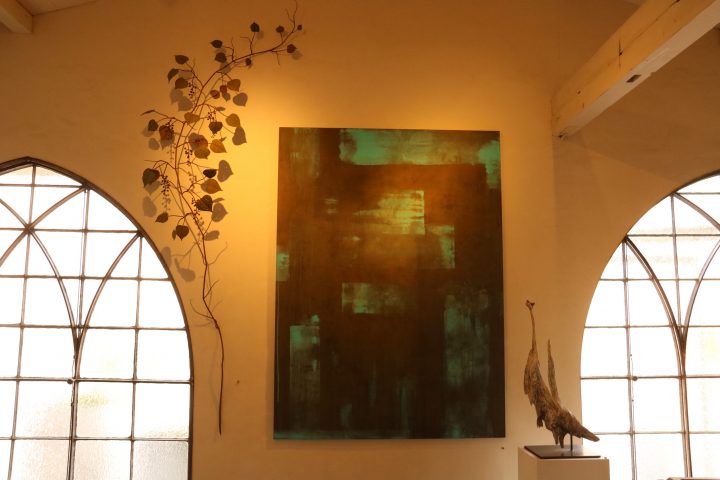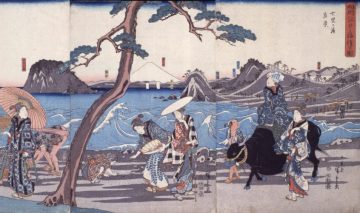[Castle EXPO 2016, Part 2] Full of castles and castles to enjoy! Three days where everything castle-related is gathered in Yokohama!
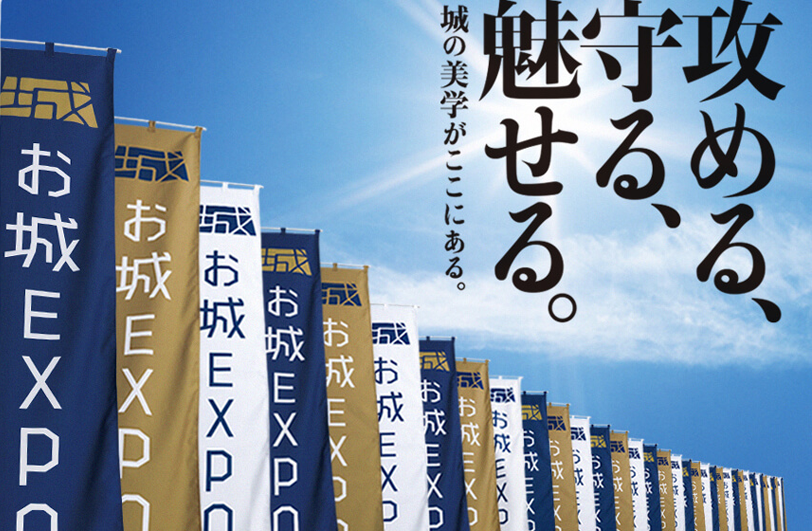
"Castle EXPO 2016" will be held for three days on December 23rd, 24th, and 25th. At Christmas, Minato Mirai is bustling with couples and families, with large Christmas trees decorated everywhere. However, when you step into the Pacifico Yokohama conference room, you will find
"Thank you for coming! Have a nice time!"
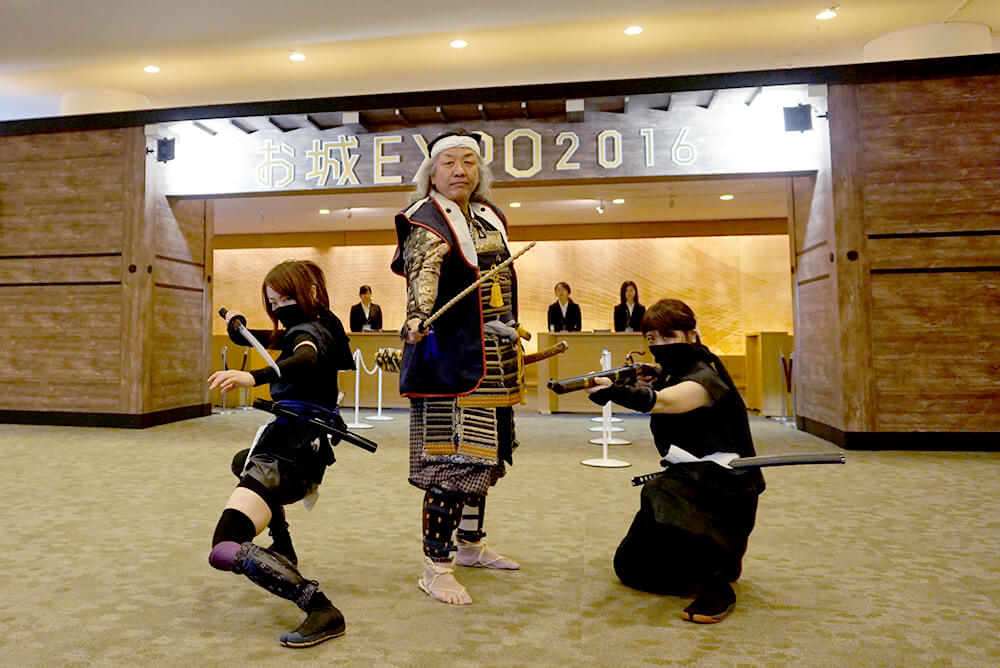
Instead of Santa Claus, the attendees dressed up as Sengoku warlords and ninjas. They posed for photos in a variety of formations.
In recent years, when I visit castles around the country, I often see people like this performing as "Omotenashi Busho-tai". It makes me feel like I'm at a castle right away, and it gets me excited!
A photo exhibition of Japan's 100 famous castles, featuring a lineup of famous castles!
The incredibly spacious Pacifico Yokohama is filled with castles from the first to fifth floors of its conference rooms, so it was hard to decide where to start, but I decided to start by visiting the "Japan's 100 Famous Castles Photo Exhibition."

The "100 Famous Castles of Japan" were established in 2006 by the Japan Castle Foundation with the aim of raising awareness of castles and castle ruins that are representative cultural heritage of Japan and historical symbols of the region, helping to encourage people to visit famous castles around the country, and leading to regional revitalization.
Currently in Japan, there are 12 castles remaining from the Edo period, known as the "12 Existing Castle Towers," of which five (Himeji Castle, Hikone Castle, Inuyama Castle, Matsumoto Castle, and Matsue Castle) are designated as national treasures.
Starting with these "12 existing castle towers," at least one castle has been selected from each prefecture, making a total of 100 castles, and a stamp rally has also been organized to make castle touring even more enjoyable.
At Castle EXPO 2016 , there were rows of panels displaying photographs of 100 selected famous castles, from the Nemuro Peninsula Fortress Ruins in Hokkaido in the north to Shuri Castle in Okinawa in the south, along with information on the castle's history and notable castle lords.
Just walking around and looking at each one makes you feel like you've visited all 100 castles.
In addition to the panel displays, there was also a booth where local groups from the castle, which has been selected as one of Japan's 100 most famous castles, provided guides dressed as princesses and warlords from the Sengoku period with useful information for touring the castle and introducing sightseeing in the area. There was also an exhibition of armor and helmets, and a commemorative photo session where you could wear armor, so this was also very popular!
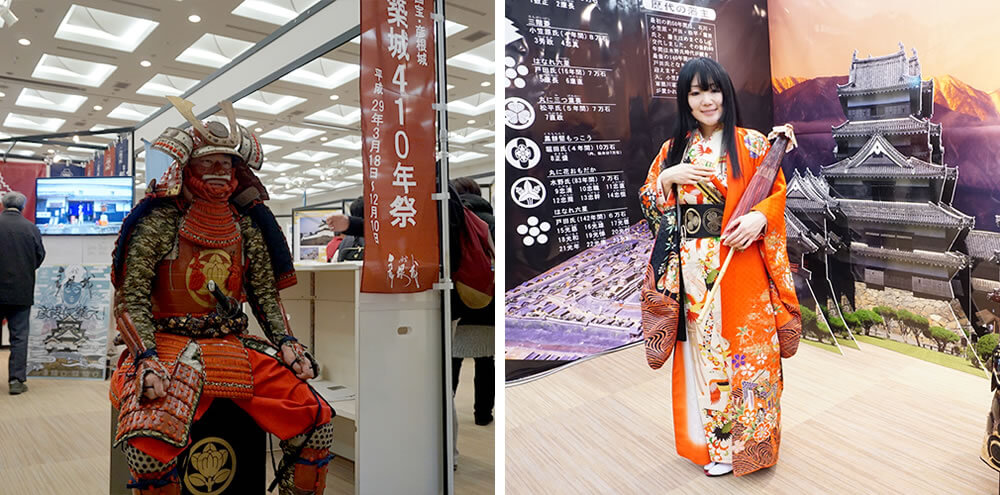
Left: I thought it was just armour since it wasn't moving, but I was surprised to see a person inside!
Local characters are all here!
Towns with castles have their own local mascots! (Well, there are local mascots all over the country.)
So, local mascots from all over Japan gathered in Yokohama. The most popular was Hikonyan from Hikone Castle. This year , the NHK taiga drama "Onna-joshu Naotora" is airing, with Ii Naotora as the main character, so it's going to be a very busy year for the Ii family cat.
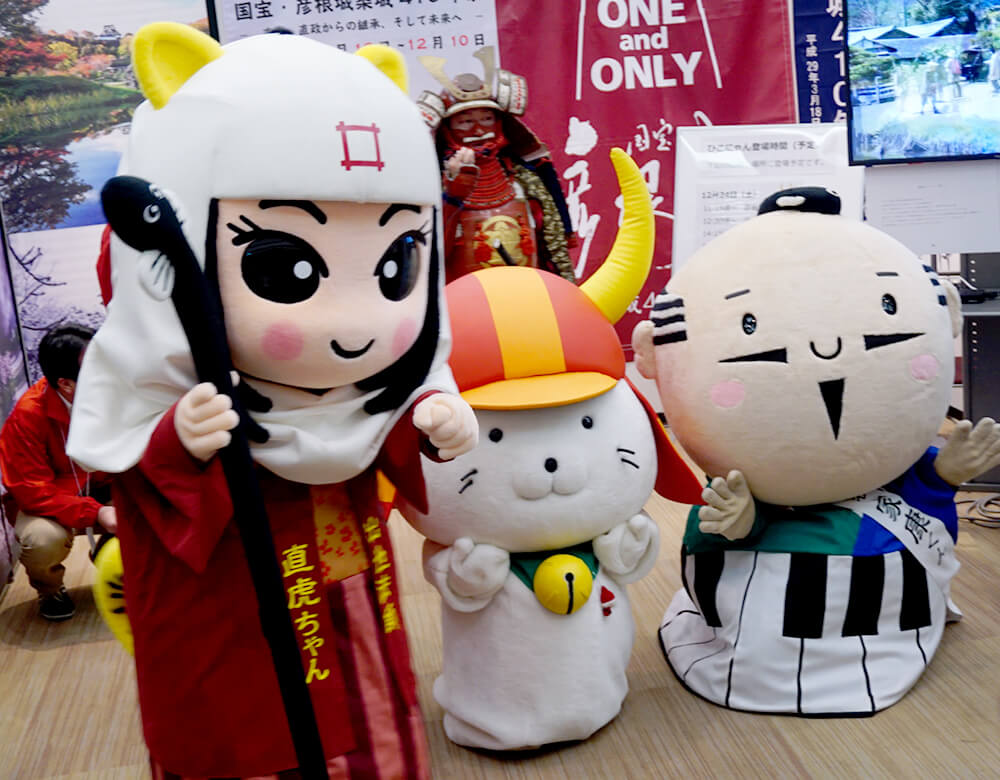
From the left, the photo shows the priest Naotora-chan, Hikonyan, and the daimyo Ieyasu-kun . Naotora-chan is originally from Hamamatsu, and is holding an eel-shaped spear in her right hand. (She looks a bit like the star, Kou Shibasaki.)
There are many more!
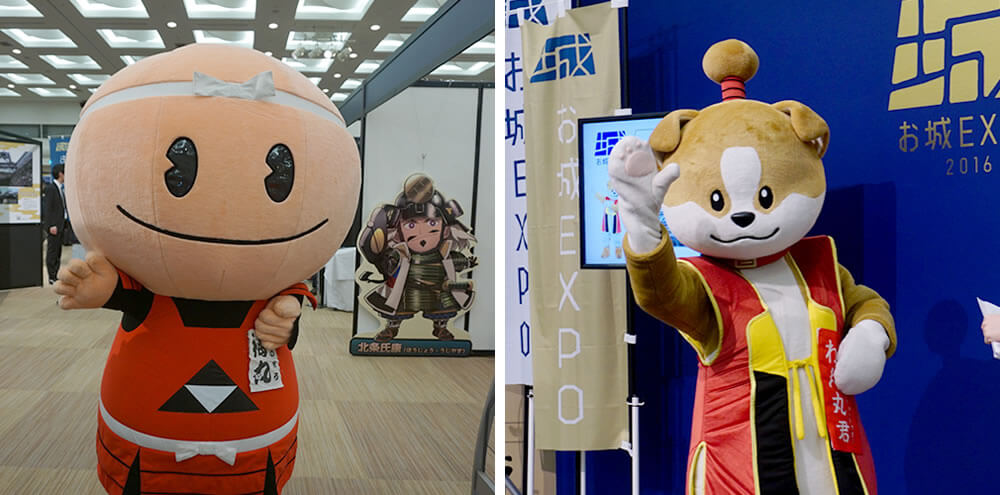
From left in the photo are Umemaru from Odawara City, Kanagawa Prefecture (Odawara Castle), and Wanmaru from Inuyama City, Aichi Prefecture (Inuyama Castle).
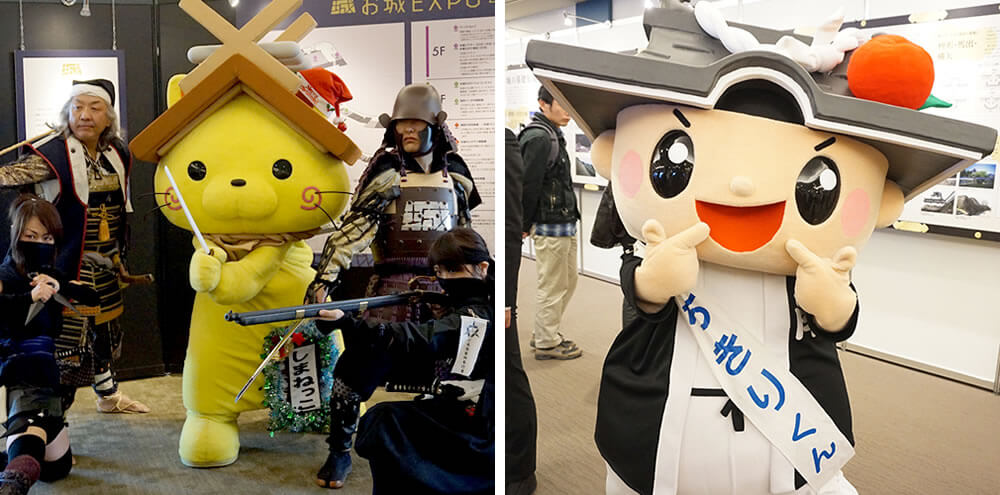
These are Shimanekko from Shimane Prefecture (Matsue Castle) and Chikiri-kun from Kishiwada City, Osaka (Kishiwada Castle)!
As they are local characters from a town with a castle, they all have a Japanese style .
And coming all the way from Kumamoto were Kumamoto Prefecture's local mascot Kumamon and Kumamoto City's local mascot Higomaru . I wasn't able to meet Kumamon this time, but I was able to see Higomaru 's show.

Higomaru is said to be a fairy who came to the present day to mark the 400th anniversary of the construction of Kumamoto Castle in 2007.
Although his body looks like it would be difficult for him to walk, once he started dancing his movements were quite intense, especially his spinning techniques which were very sharp!
The tape on the roof is "Rivatape"
Hmm? Isn't that just a bandage? Well, most people in Kumamoto call bandages Rivatape, and this is a custom-made product from Rivatape, a local company that makes bandages.
Kumamoto Castle was severely damaged and marred in last year's earthquake, but the message is that we must heal our wounds and do our best.
Since it was Christmas day, she wore a Santa hat and reverse tape , and danced and spun energetically with her partner, Arisa-san!
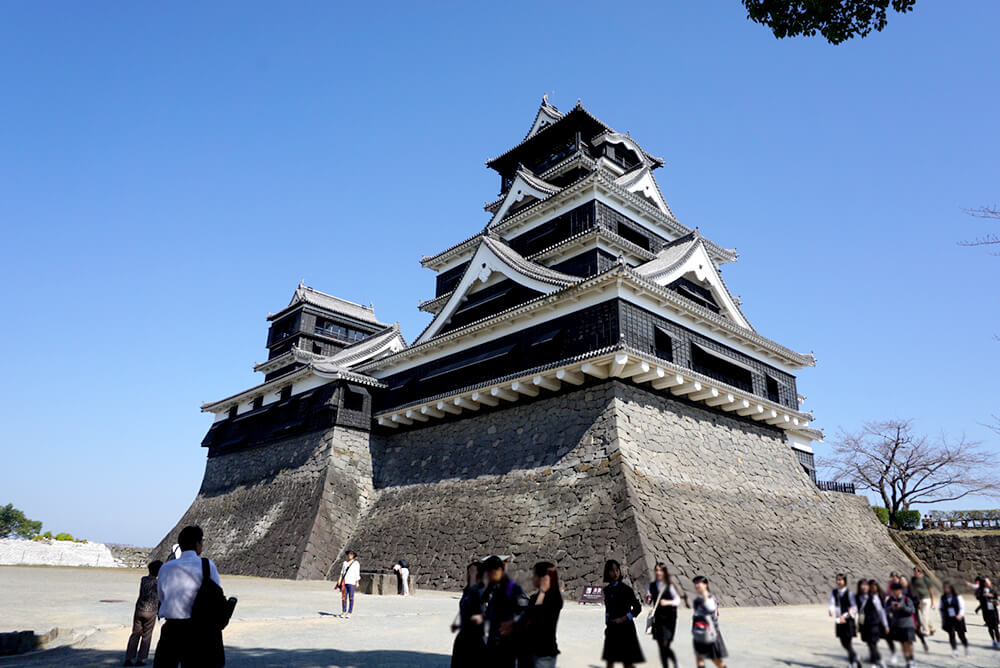
I can't wait for the day when Kumamoto Castle is restored to its original state. (Photo taken in October 2015)
At Castle EXPO 2016 , there was an exhibition of stones painted with rare patterns that were discovered during the restoration work of Kumamoto Castle, as well as a corner to support the reconstruction of Kumamoto. Donations from many castle enthusiasts amounted to 738,052 yen over the three days!
What was Nobunaga's group of stonemasons, the Anō-shu?
At Castle EXPO 2016, talk events and forums were held, inviting many "castle specialists" including the rakugo performer and castle enthusiast, Shunputei Shota, who was introduced in the first part of this article.
One of the most unusual opportunities was the lecture by Awata Sumitomo, president of the construction company Awata Construction (head office: Otsu City, Shiga Prefecture). Awata is a descendant of the Anō-shu, a group of stonemasons who were hired by Oda Nobunaga after being recognized for their high level of skill.
The title is "The Anō-shu employed by Nobunaga and their stone walls."
It is said that the first "castle with stone walls," which marked the turning point from medieval mountain castles to modern castles, was Azuchi Castle built by Oda Nobunaga, and it was the Anato-shu who built the stone walls of Azuchi Castle.
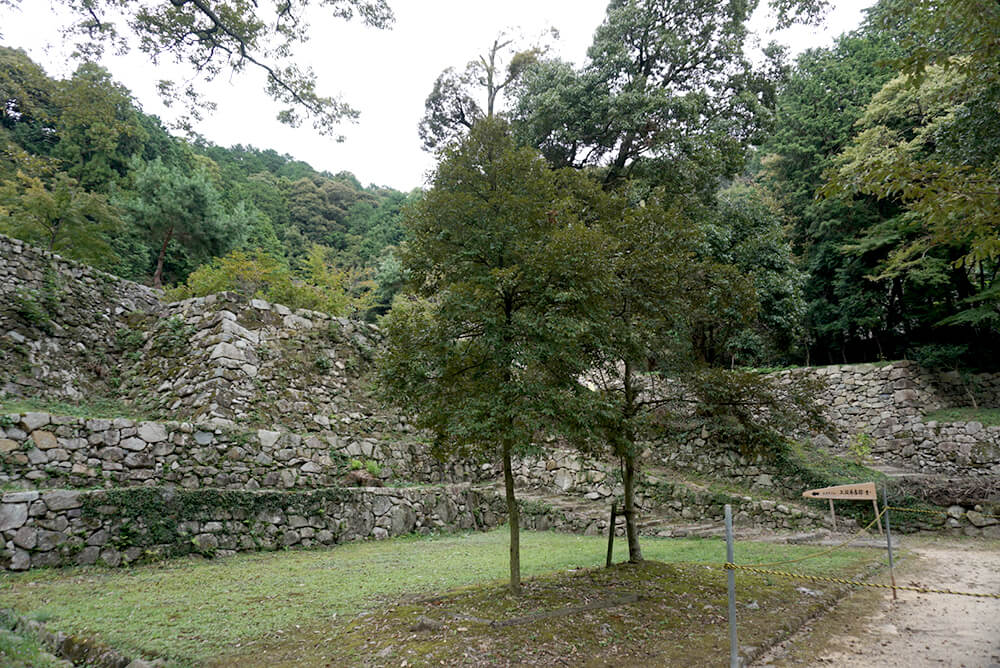
The stone walls of Azuchi Castle that remain today
There is no manual for the stone masonry techniques of the Anato-shu, and they are still passed down orally to this day. The reason for this is
"The key is to listen to the voice of the stone, understand its heart, make the heart of the stone your own, and train your mind and arm to place each stone with your heart in it so that it will feel comfortable there forever (From the Anato-shu Secret Mindset)."
Apparently, the essence of "dialogue with stones" cannot be conveyed in words.
Awata, a descendant of the Anato-shu, has previously worked on restoring the stone walls of Azuchi Castle, Hikone Castle, and other castles.
The lecture also included an introduction to the tools used by the Anato-shu, but these were nothing special or new; they were tools that have been used for a long time.
I felt that the precision of the technique lies not in the tools, but in the power of the imagination of the craftsman who manipulates stone with ease.

Awata Junnosuke, a descendant of the Anato-shu
Finally, Mr. Awata introduced a memorable quote from Oda Nobunaga.
“Those who are born with talent rely on it and neglect training; they become conceited.
However, those who lack natural talent make daily efforts to acquire skills.
It's a completely different mindset. That's important."
Mr. Awata, who possesses the special skills of the Anato-shu stone masonry that have been handed down over a long history, values Nobunaga's words, "Daily effort is more important than talent." This may be due to the Anato-shu's way of passing on their techniques, which is to "listen to the voice of the stone."
From now on, when I go to see castles around the country, it will be interesting to look at them and think, "Maybe this stone wall was built by the Anato-shu."
There are plenty of exhibits, including castle dioramas!
At Castle EXPO 2016 , there was an exhibition of models of 12 existing castle towers, as well as castle dioramas of 40 castles from all over the country.
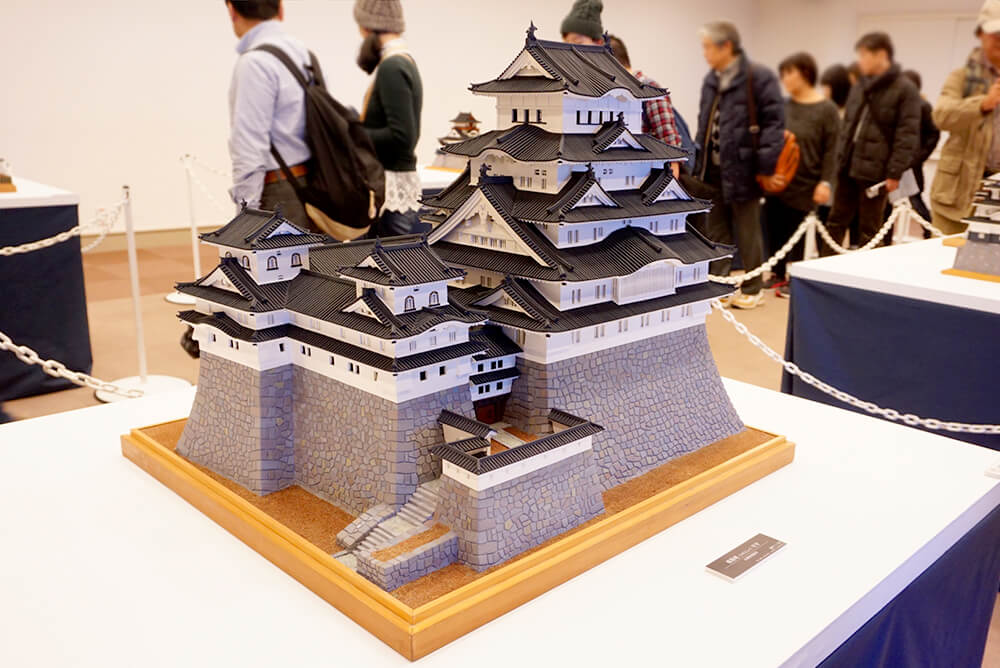
A model of Himeji Castle, a national treasure and a World Heritage Site. The roof is black, so perhaps it's before renovation?
The castle diorama in particular was fantastic, as it was not just the buildings but the entire castle grounds, making it easy to see the size and elevation differences and allowing you to imagine the castle as a whole!

A diorama of Kochi Castle. The height difference is easy to see.
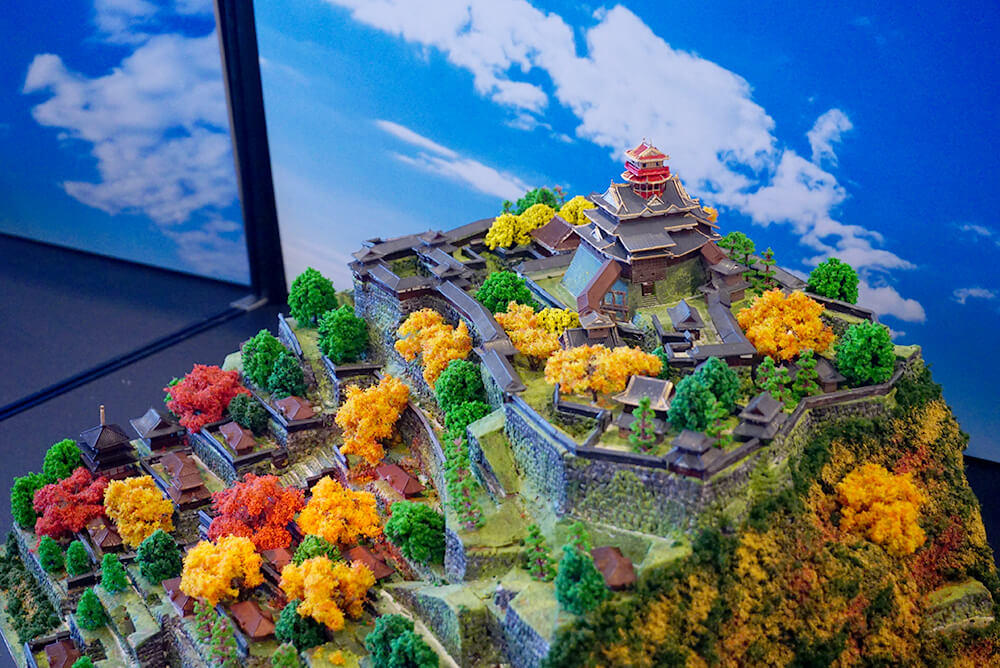
A diorama of Azuchi Castle, including the burnt out tower. Also includes the stone walls of the Anō-shu!
They are all very intricately made. It's rare to have 40 castle dioramas on display all at once, so this is a delight for castle fans!
There was also a sales corner, where castle goods, books, plastic models, and specially selected souvenirs from each castle town were lined up.
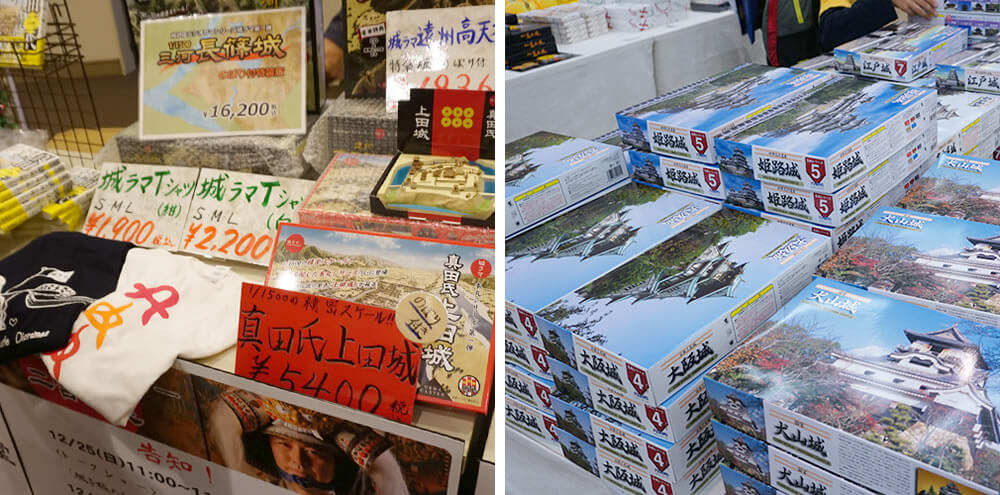
Due to the popularity of the 2016 Taiga drama Sanada Maru, there are many Sanada-related goods!

Famous castle town sweets and alcoholic beverages were all gathered together. There was also a gachapon machine!
Additionally, the "Castle Ukiyo-e Exhibition - Matsuzaki Collection" section displayed 10 ukiyo-e prints depicting military commanders, battlefields, and castles painted by ukiyo-e artists who were active from the Edo period through to the end of the Edo period and into the Meiji period, while the "Selected Castle Illustrations Exhibition" displayed eight castle illustrations (including reproductions) from the collection of the Japan Castle Foundation.
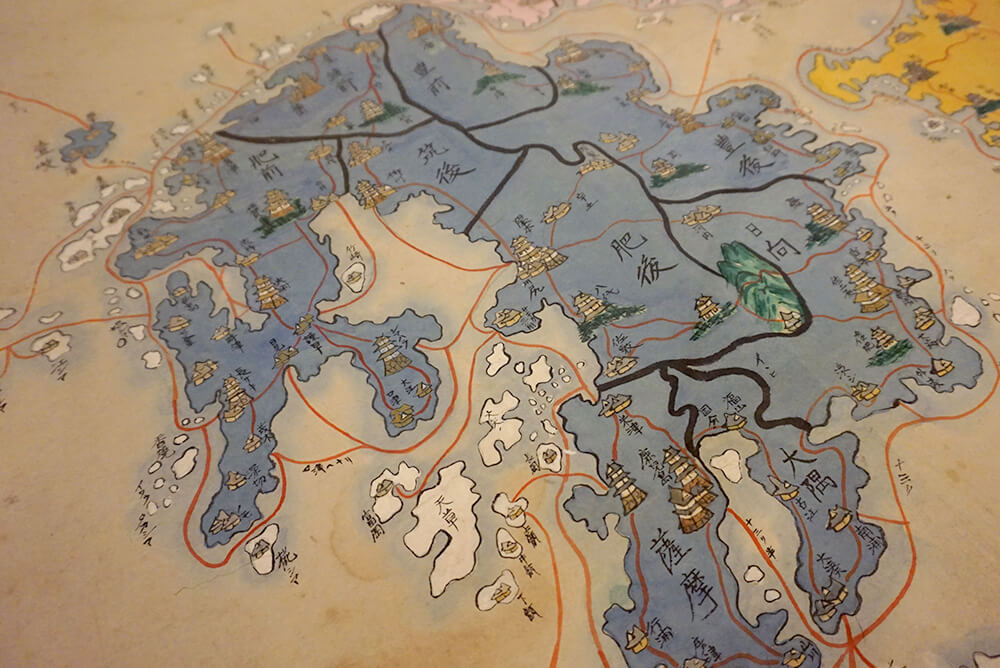
A picture of a castle on an old map of Japan. Looking at it this way, you can see that there were many different castles in different places.
I think I'm going to love castles even more now!
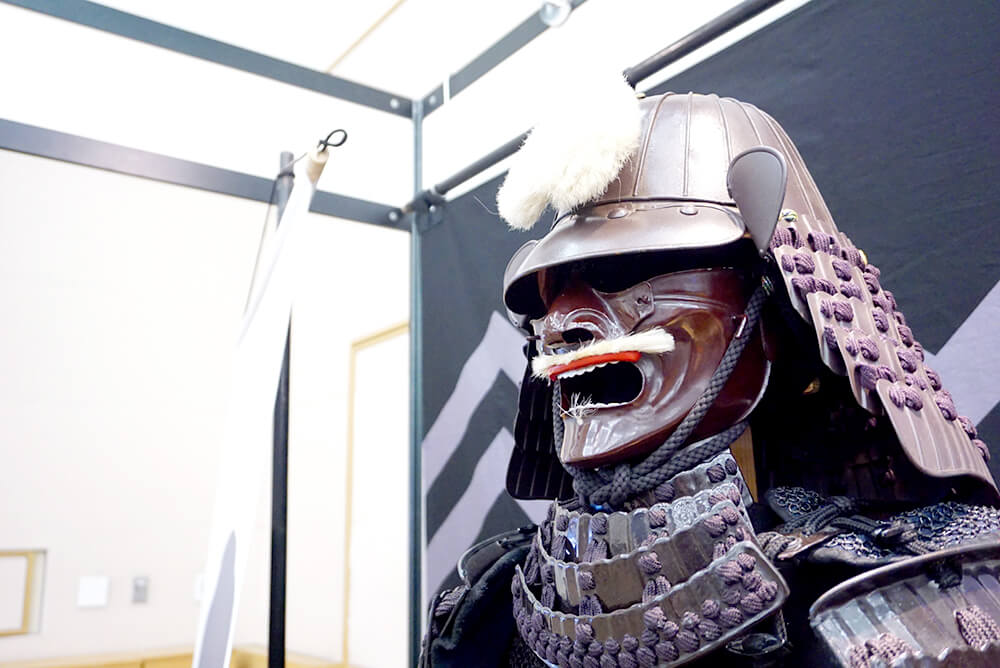
The exhibition took up the entire 1st to 5th floors of the Pacifico Yokohama conference room, and was held for another three days, but Castle EXPO 2016 was so packed with content that it was impossible to see everything in one day.
In particular, the "Premium Carefully Selected" lectures and talk events by "castle specialists" were full of valuable information that you wouldn't want to miss.
In addition to the Yamashiro talk event by Shunputei Shota, introduced in the first part, and the lecture by Awata, a descendant of the Anato-shu, there was also a forum on the theme of "Understanding the reality of the siege of Odawara" and a lecture by Hirayama Masaru, who was in charge of historical research for the taiga drama "Sanada Maru," which was of great interest to fans of the drama.
In addition to castle researchers, various "castle specialists" appeared, including castle photographers and castle illustrators, who enjoy castles from different angles. For example, we heard about how the ability to take photos using drones has made castle photography even more interesting.
The venue was always bustling with people, from adults to children, and I could sense the excitement of the recent castle boom. Apparently the number of visitors over the three days was as high as 19,000 !
During these three days, I learned a lot about the joys of touring castles, such as the fact that not all castles have castle towers, but that mountain castles are also very attractive as the origins of castles, and the fun of walking around a castle with both an attacking and defending mindset.
Castle EXPO 2016 ended with great success, but this was actually the first time it was held.
They plan to continue holding this event in the future to promote interaction between castle fans and the areas where castles are located, as well as to advance castle research.
It's early to think about it, as the event just ended, but I can't wait to find out what this year's events will be!
